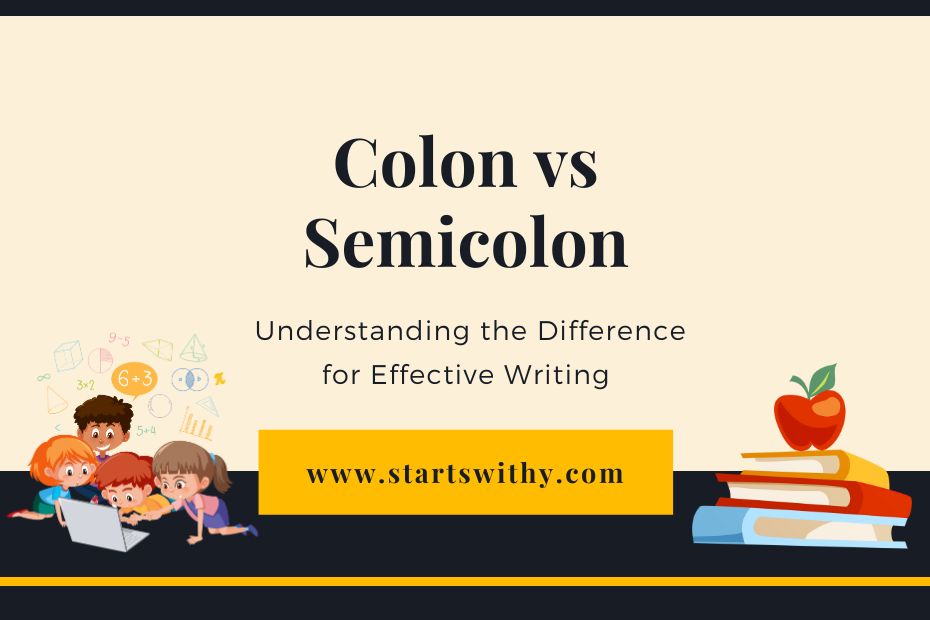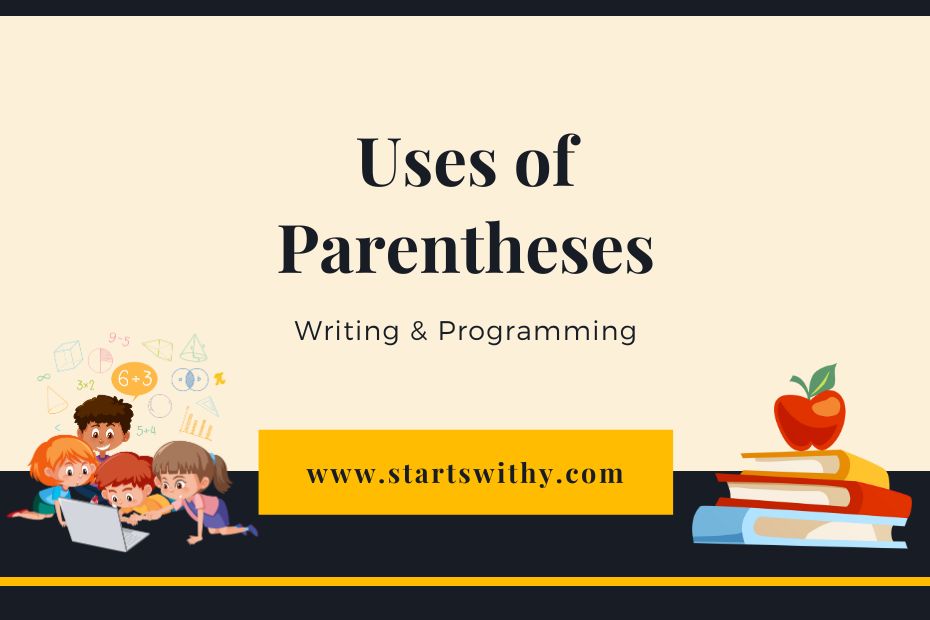Are you confused about when to use a colon and when to use a semicolon in your writing? Don’t worry, you’re not alone. Many professionals struggle with understanding the differences between these two punctuation marks. But fear not, because in this article, I’ll break it down for you and provide clear examples to help you make the right choice every time.
When it comes to the colon and semicolon, it’s important to understand that they have distinct purposes. While they may look similar, they serve different functions in your writing. The colon is used to indicate a closer relationship between two independent clauses, often emphasizing the second sentence. On the other hand, the semicolon is used to connect two equal sentences, without placing as much emphasis on the second sentence.
By mastering the usage of these two punctuation marks, you’ll be able to communicate more effectively and avoid grammatical errors in your professional writing. So, let’s dive in and explore the differences between the colon and semicolon, and learn when and how to use them correctly.
Understanding the Basics
What is a Colon?
A colon is a punctuation mark that looks like two periods on top of each other. It is used to introduce or emphasize a series, quotation, or further explanation. The word that appears after the colon is sometimes capitalized and sometimes not, depending on the style. Lists are never capitalized unless they start with a proper noun.
Different style guides have slightly different rules for using colons. For example, both APA and AP style say you should capitalize the first word if it’s a complete sentence. The Chicago Manual of Style also capitalizes the first letter of a complete sentence following a colon, but only if there are two explanatory sentences. For MLA format, the first word is capitalized if there are several related sentences following the colon or if it introduces a principle or rule.
One of the biggest challenges of the colon is that different style guides use them differently. It’s important to consult the specific style guide you are using to ensure correct usage.
What is a Semicolon?
A semicolon is a punctuation mark that looks like a period on top of a comma. It is used to connect two related independent clauses. While a semicolon looks similar to a colon, it serves a different function. A semicolon joins two parts of a sentence together and indicates that something significant is coming after.
The main grammatical purpose of a semicolon is to join clauses. It has the ability to connect two independent thoughts in a single sentence. You can use a semicolon when the two clauses can stand separately as two complete and grammatically correct sentences.
Using the right grammar and punctuation is essential in professional writing. Despite their similar appearance, colons and semicolons serve very different purposes. Understanding their distinctions is crucial for clear communication and to avoid grammatical errors.
Differences Between Colon and Semicolon

Usage and Function
When it comes to the usage and function of colons and semicolons, there are distinct differences between the two punctuation marks. Understanding these differences is crucial for clear and effective communication. Here’s a breakdown:
Colon:
- A colon is used to introduce or emphasize a series, quotation, or further explanation.
- It shows a closer relationship between the sentences.
- It places greater emphasis on the second sentence.
- It can be used to introduce words, phrases, lists of items, explanations, elaborations, and quotations.
Semicolon:
- A semicolon is used to connect two related independent clauses.
- It indicates that something significant is coming after.
- It usually connects two equal sentences.
- It separates major sentence elements.
Punctuation and Formatting
Another aspect to consider when using colons and semicolons is punctuation and formatting. Here’s what you need to know:
Colon:
- Style guides, such as the American Psychological Association (APA), recommend capitalizing the first letter of a complete sentence that follows a colon.
- However, Dictionary.com and Thesaurus.com, per their own style guidelines, recommend lowercase after a colon in almost all instances.
- Semicolons should be used between two closely related independent clauses if they are not already joined by a coordinating conjunction like “and,” “but,” “or,” “nor,” “for,” “so,” or “yet.”
- Using a comma instead of a semicolon between two independent clauses creates an error known as a comma splice.
Understanding the differences between colons and semicolons not only helps avoid grammatical errors but also allows for more coherent and polished writing. Now that we’ve covered the usage and function as well as punctuation and formatting of colons and semicolons, let’s explore some examples to further illustrate their differences.
When to Use a Colon
Introducing a List or Explanation
A colon is a versatile punctuation mark that can be used in various ways, but one of its primary functions is to introduce a list or explanation. When you want to highlight a series of items, a colon can help structure the information and make it more visually appealing to readers. Here are a couple of examples:
- I have three favorite hobbies: reading, hiking, and painting.
- The recipe calls for the following ingredients: flour, eggs, sugar, and butter.
In addition to introducing lists, a colon can also be used to provide further explanation or clarification. When you want to elaborate on a statement or add more detail, a colon can help signal to the reader that more information is coming. Here’s an example:
- There is one thing I value above all else: honesty.
As you can see, the colon acts as a signpost, guiding the reader towards more specific information. It helps create a smooth flow and adds emphasis to the content.
Separating Clauses
Another important usage of a colon is to separate two related independent clauses. While a semicolon is also used for this purpose, a colon indicates a closer relationship between the two clauses. It suggests that the second clause is providing further information or context related to the first clause. Take a look at this example:
- The concert was everything I had hoped for: the energy, the music, and the crowd were incredible.
In this sentence, the colon is used to connect the two clauses and emphasize the positive aspects of the concert. It showcases the strong connection between the experience and the speaker’s satisfaction.
Remember, using a colon instead of a semicolon in this context helps convey a stronger relationship between the clauses and adds clarity to your writing.
A colon is a valuable punctuation mark that serves multiple purposes in writing. It can introduce lists and explanations, as well as connect related independent clauses. Understanding when and how to use a colon can greatly enhance your writing and make it more effective in conveying information.
When to Use a Semicolon
Joining Independent Clauses
A semicolon is a valuable punctuation mark that can be used to connect two related independent clauses. When two complete thoughts are closely related and can stand as separate sentences on their own, a semicolon can be used instead of a conjunction to join them.
For example:
- Charlie really loves tacos; they may be his favorite food in the world.
- Hillary is a skilful racer; moreover, she is a careful one.
In these examples, each independent clause could stand as a complete sentence on its own, but using a semicolon instead of a period helps to emphasize the close relationship between the two ideas.
Separating Items in a List with Internal Punctuation
Another useful application of semicolons is to separate items in a list when those items themselves contain internal punctuation, typically commas. Using semicolons in this context helps to avoid confusion and clearly delineates each item in the list.
For instance:
- I have visited multiple American cities, including Dallas, Texas; New York, New York; and Orlando, Florida.
- On my trip, I met John, the baker; Julie, the teacher; and Jeff, the mechanic.
- I bought shiny-red apples, small sweet grapes, and firm, fresh pears.
In these examples, the use of semicolons ensures that each item in the list is easily distinguishable, especially when the items themselves include commas.
By understanding the proper usage of semicolons, writers can effectively connect independent clauses and separate list items with internal punctuation. These techniques contribute to clearer and more concise writing, enhancing the overall readability and effectiveness of the text.
Examples of Colon and Semicolon Usage
Colon Examples
When it comes to using colons, there are several scenarios where they can be effectively employed:
- Introducing quotes: A colon can be used to introduce a quote, helping to signal the start of someone’s speech or statement. For example:
- My manager embraces this concept: “Work smarter, not harder.”
- This morning our supervisor addressed the office: “Who can work this weekend?”
- My colleague left these directions: “Turn in the report by noon.”
- Introducing a series: Colons can also be used to introduce a list of items. This helps to clearly separate the introductory phrase from the actual list. For instance:
- You have two options: submit the report before 5 pm or stay late to finish it.
- This position has two major responsibilities: producing and presenting the monthly report.
- This job could help me improve several important skills: writing, reading, and active listening.
- Three states comprise the West Coast: California, Oregon, and Washington.
- Dialogue in scripts or interviews: If you are writing dialogue, such as in a script, legal transcript, or question-and-answer style interview, you can use a colon to separate the speaker’s name from their speech. This can improve readability, depending on the style guide and industry expectations. For example:
- Student: “Who wrote Hamlet?”
- Teacher: “The famous English dramatist, William Shakespeare.”
- Q: “Who wrote There and Back Again?”
- A: “The hobbit, Bilbo.”
Semicolon Examples
Semicolons have their own set of usages that can enhance the flow and clarity of your writing:
- Joining related independent clauses: One common use of the semicolon is to connect two related independent clauses that could stand alone as separate sentences. By using a semicolon instead of a period, you emphasize the relationship between the ideas. Here are a few examples:
- Charlie really loves tacos; they may be his favorite food in the world.
- Hillary is a skilful racer; moreover, she is a careful one.
- Clarifying lists with internal punctuation: Semicolons can also be employed to clearly separate items in a list when those items contain internal punctuation. This helps avoid confusion and ensures that each item is differentiated. For instance:
- INCORRECT: The ingredients included salt, butter, flour, and just a hint of rosemary.
- CORRECT: The ingredients included salt, butter, flour, and just a hint of rosemary.
- CORRECT: The ingredients included the following: salt, butter, flour, and just a hint of rosemary.
Conclusion
In this article, I have explored the usage of colons and semicolons in writing. Colons serve as powerful tools to introduce quotes, series, and dialogue in scripts or interviews. They provide clarity and structure to our sentences, making them more engaging and impactful. On the other hand, semicolons play a crucial role in joining related independent clauses and clarifying lists with internal punctuation. By using semicolons effectively, we can create a smooth flow of ideas and avoid confusion for our readers.
Throughout the article, I have provided examples that illustrate how colons and semicolons can be employed in various writing scenarios. These examples demonstrate the versatility and usefulness of these punctuation marks in enhancing the clarity and readability of our writing. By understanding the proper usage of colons and semicolons, we can elevate our writing to the next level and effectively convey our intended message.
So, the next time you find yourself unsure about whether to use a colon or a semicolon, remember the guidelines discussed in this article. With practice and familiarity, you’ll become more confident in using these punctuation marks to enhance your writing.




